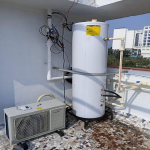Roofers and tree service professionals work in some of the most structurally sensitive areas of residential and commercial properties. These spaces, rooftops, exterior walls, soffits, and overhanging tree limbs often intersect with materials that were installed decades ago. One hazardous legacy material still present in many older buildings is asbestos. For those working on or around roofs and structures, recognizing and properly responding to the presence of asbestos is crucial for health and legal compliance.
Asbestos fibers are microscopic but dangerous, capable of lingering in the air when disturbed and leading to serious illnesses after prolonged or even limited exposure. Roofing and tree crews must know where this risk hides and how to approach each job with safety in mind.
Unexpected Places Asbestos May Be Found
Many contractors are surprised to learn just how many construction materials once relied on asbestos for durability and fire resistance. While insulation and ceiling tiles are well-known culprits, asbestos was commonly used in roofing felts, flashings, shingles, and siding, areas where tree branches and roofing systems meet. Roofing tar, caulking compounds, and even adhesives used under shingles or sheet materials may contain asbestos in older homes. A less obvious risk exists when working near deteriorated siding or asbestos walls, which were popular in mid-century construction. These fiber-reinforced panels may look like standard cement board, but often contain chrysotile or other asbestos fibers.
Any impact from falling limbs, dropped tools, or power equipment can crack or chip these surfaces, releasing harmful dust into the air. Tree crews trimming branches near older homes should take extra caution if cutting near eaves, overhangs, or wall cladding that appears brittle or weathered.
Safety First
Before beginning any job on a property built before the 1980s, it’s wise to assume there could be asbestos-containing materials present. When there is any doubt, a certified asbestos inspector should evaluate the site if the work involves demolition, cutting, or other disruptive tasks. A simple pre-job visual inspection by a trained contractor can prevent unnecessary exposure.
Proper personal protective equipment (PPE) is critical. Respirators rated for particulate filtration, disposable coveralls, gloves, and eye protection should be used anytime suspected asbestos-containing materials are involved. Wetting down surfaces before any work can help reduce the chance of airborne fibers.
Tree Crews
While the majority of tree work is performed away from the building envelope, trimming large branches near the roofline, chimney, or siding comes with specific hazards. A branch crashing into old roofing shingles or brittle soffit panels may unknowingly release asbestos dust into the yard, into ventilation systems, or onto the crew itself.
Workers should avoid allowing limbs or equipment to strike surfaces that appear cracked, crumbly, or discolored. If there’s evidence of patched-over areas or mismatched building materials, it could indicate previous attempts to seal or cover asbestos-laden products.
Roofing Teams
Roofing contractors are vulnerable to asbestos exposure due to the nature of the materials they remove and replace. Power tools such as circular saws, grinders, and sanders can aerosolize asbestos fibers almost instantly if used on old roofing cement or backing boards. If the crew discovers unusual underlayment materials, older cement board panels, or fibrous insulation layers, the job should be halted until the materials can be tested.
Many jurisdictions require specific licensing or reporting procedures when asbestos is encountered. Ignoring these protocols can result in fines, lawsuits, or worker health issues down the line.
Working around asbestos is not a daily concern for every job, but when it does appear, it becomes the most important safety priority on site. Tree and roofing crews who stay informed, vigilant, and cautious can complete their work without compromising their health or that of others. Being prepared, using protective equipment, and knowing when to stop can make all the difference between a routine job and a dangerous exposure.











